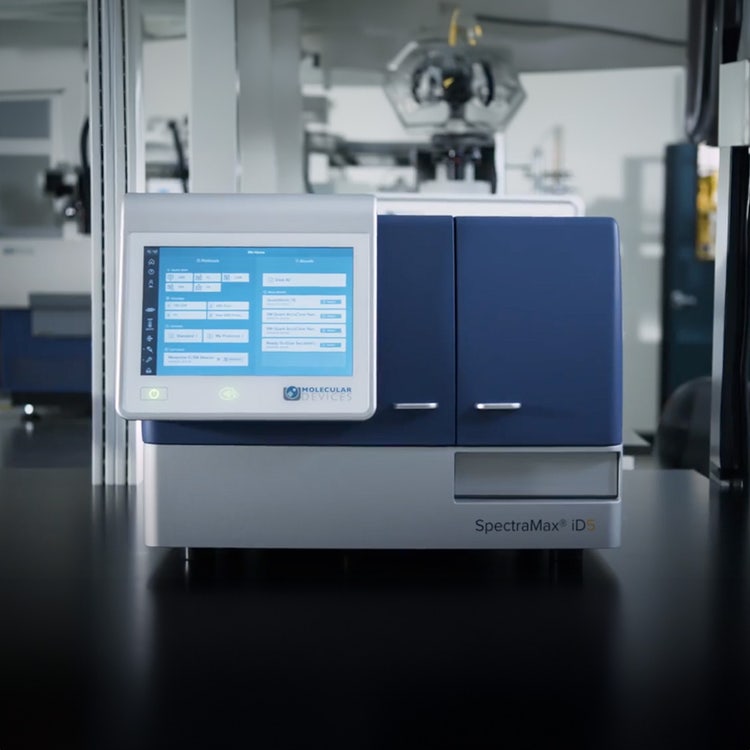We See a Way to
accelerate ELISA processing speeds by 4x for complex biology applications.
Molecular Devices | SpectraMax Microplate Readers

Scaling High-Throughput Screening for Complex Biology
3D culturing of human cells is enabling new models for research that are considered more biologically relevant than monolayer (2D) cell cultures. Quantitative methods like the enzyme- linked immunosorbent assay (ELISA) continue to be a route by which information on additional biomarkers can be collected non-destructively while preserving the original 3D structures for further studies.
Individual organoids grown in wells of a 384-well microplate are assayed for the release of ALT, which serves as an indicator of decreased liver cell viability in response to drug treatment. Quantitative analysis of results allowed assessment of the effects of a set of relevant compounds on ALT release as a marker of cell viability.


Enabling Faster, More Predictive Drug Discovery
SpectraMax Microplate Readers from Molecular Devices streamline assays workflows for complex biology, allowing researchers to generate reproducible, high-throughput data from human relevant models with increased efficiency and precision.
Resources
Video

Accelerating Cancer Research: Microplate Reader-Based Viability Analysis for Rapid Drug Candidate Identification in Patient-Derived Organoids
Brochure

Rapid Assessment of Patient-Derived Colorectal Cancer Organoids
Cancer cell lines grown in 2D have long served as experimental surrogates for cancers. In recent years, the 3D culture of cancer cells, often alongside other cell types in formats where they can form multi-layered structures, is enabling new models for cancer research that are considered more biologically relevant.